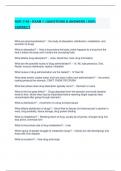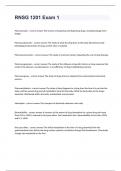Samenvatting
Full Summary Sustainable Business Practices 2021
- Vak
- Instelling
This is an extensive summary of all the course contents of the course Sustainable Business Practices 2021. It includes lecture notes of all the lectures (expect the guest lectures) and summaries of all the mandatory book chapters.
[Meer zien]












